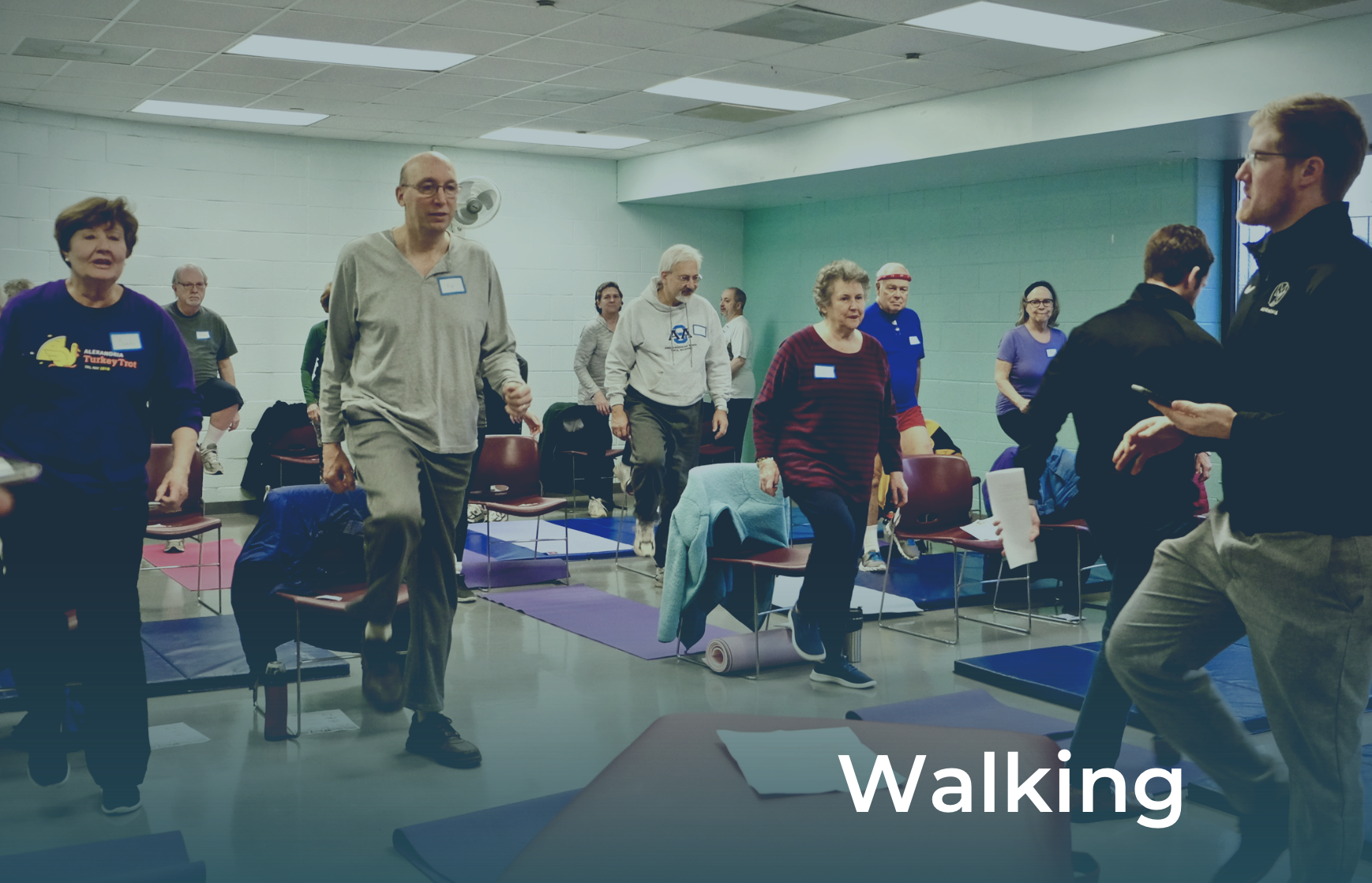Walking
Walking is one of the single best exercises that we can do for our body and mind.
Don’t believe us? We found several research articles that tell a fascinating story about the benefits of walking and how older adults can implement a walking routine into their daily life.
1. 10,000 Steps as a Daily Goal?
For years, 10,000 steps has been referenced as a worthwhile goal for daily step count. As it turns out, 10,000 steps has no scientific evidence to support its specific use as a goal number, and it was first used somewhat arbitrarily by a Japanese marketing campaign for a step-tracker released in 1964.
This 2021 study examined the association of daily step count with premature all-cause mortality among middle aged people (41-65). They found that participants who took >7,000 steps per day experienced lower mortality rates by 50-70%, compared with participants taking fewer than 7,000 steps a day.
The big picture: If you enjoy longer walks and are clocking in at 10,000+ steps, keep up the good work! However, if you beat yourself up for falling short of 10,000 steps, try aiming for this more attainable goal at 7,000 steps.
Regardless, take note of your starting point and progressively increase your daily step count in appropriate increments. Your mind and your body will thank you!
2. Nocturia (Using the Bathroom at Night) and Falls Risk
The aging process can affect all parts of the body, including the pelvic floor.
The pelvic floor muscles play a foundational role in supporting our bowel, bladder, and reproductive organs.
Many older adults deal with pelvic floor issues, such as urinary incontinence, overactive bladder, or other related disorders. One common functional issue is having to get up during the night to empty the bladder, also known as nocturia.
Recent research has shed light on how this might become problematic in relation to falls. In a subset of older individuals, nocturia 3x a night was associated with a 28% increased risk of a fall within three years.
Walking to the bathroom in a low light environment while holding a full bladder can sometimes be a difficult balancing act. Setting up your environment for success and learning about ways to gain control of your bladder and pelvic floor are two strategies to prevent falls related to nocturia.
3. Walking Speed as a Vital Sign?
Walking (or gait) speed is an excellent measure of overall health. As mentioned in this article, walking speed can give us information on someone’s life expectancy, overall health, balance, emotion, and even their ability to recover from a hospitalization or surgery.
Walking speed as a clinical test is safe, cost-effective, and easy-to-administer, making it useful for clinicians to assess functional mobility as well as overall health.
While walking speed alone is not a perfect indicator of health, it can work well in conjunction with other vital signs and functional outcome measures for insight into the bigger picture of overall health.
Looking to improve your walking speed? Start by increasing your speed for short intervals (i.e. 1 minute, 100 steps, 100 yards, etc.). Consider choosing an object in the distance and pick up the pace until you hit it!
4. Guided Walk with James
Looking to apply some of the above learnings into practice?
Check out this Guided Walk audio recording created by one of our AgeProof Your Body instructors, Dr. James McAfee, PT, DPT.
About 20 minutes in length, this narrated walk dives deeper into important topics related to walking and overall health. Grab some headphones and follow along on your next walk around the neighborhood.
Final Thoughts 💭
Walking is not only a great way to improve your health, but also a great way to measure your health.
Often a movement we take for granted in our younger years, walking is an important activity to practice across the lifespan.
Are you having difficulty with walking (pain, balance issues, or decreased endurance)?
We can help! Schedule a session with a physical therapist or personal trainer to assess your walking speed or learn new exercises to improve your walking.
Our AgeProof Your Body online exercise community is perfect for older adults looking to improve their ability to walk well across the lifespan.

